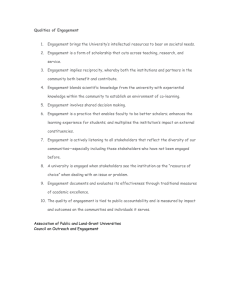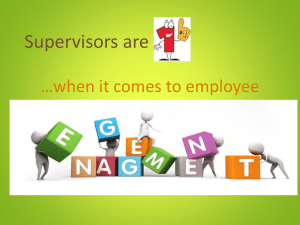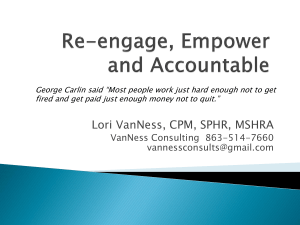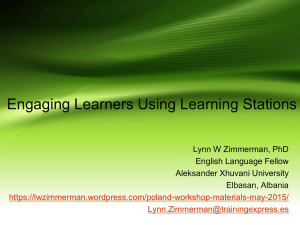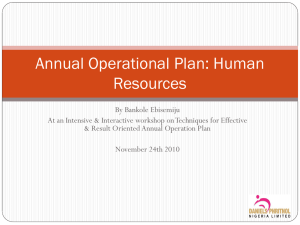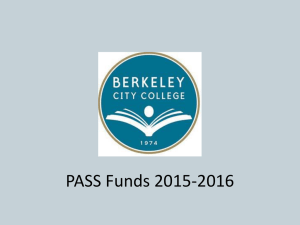USM-Employee-Engagement-Statistics-and-Trends
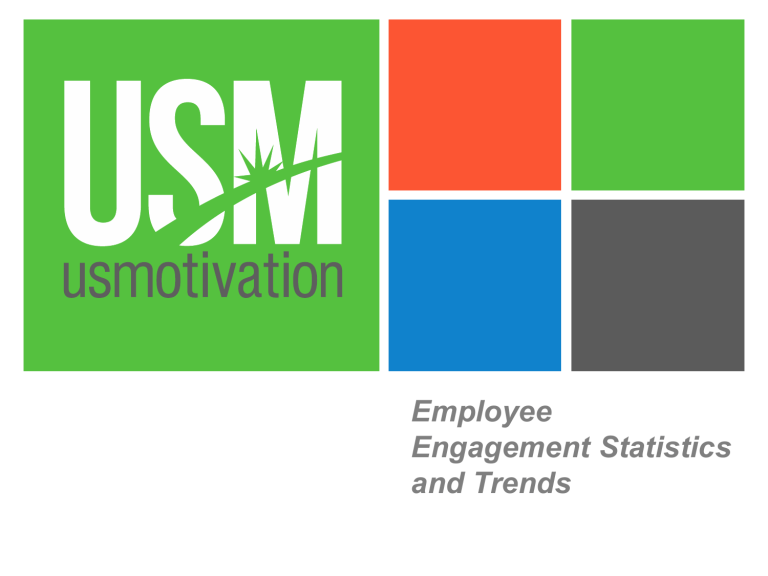
Employee
Engagement Statistics and Trends
Statistics and Trends
•
•
•
Numerous research sources show your human capital investment is in the range of 65-85% of your total investment as an organization. If you’re outlaying that much of your financial resources as business, it follows you will want to get the most possible return on that investment.
A recent Towers Watson survey indicated that nearly two
–thirds of U.S. employees are not fully engaged in their work and are less productive as a result. In response to survey results like this, executives exhort managers to spend even more time with their employees.
When employees are engaged , they exhibit many more specific “engagement traits” – including a willingness to put in a great deal of extra effort, increased loyalty, a greater willingness to recommend their company as an employer of choice, efforts to inspire others in the company through concrete comments and actions, and similar outcomes – compared to other employees.
Statistics and Trends
• The Council on Financial Competition estimates it costs 5 to 10 times as much to attract a new customer as it does to keep an existing one.
• Columbia University studies show that replacing a lost employee costs
150% or more of that employee’s salary.
• 90% of companies in North America have some kind of recognition effort in place, but % of employees say they don’t feel engaged. That’s primarily due to organizations failing to align their program with their company’s core mission and values.
• Investment in technology for recognition providers is key. Sophisticated reporting functionality, in-depth analytics, even event reminders that prompt managers to acknowledge achievements raise the effectiveness of recognition spend.
The Engagement Impact
• A recent Gallup poll revealed that more than 71 percent of Americans aren't engaged at their jobs.
• Of survey respondents who were engaged, 74 percent said they looked forward to going to work every day
• Research shows engaged employees are more enthusiastic, loyal, productive and tend to become high-potential employees.
The Engagement Evolution
The old way:
• Focus on job satisfaction, performance reviews, salary/bonuses
• Outdated talent development/recognition models (service awards, etc.)
• Expectations that employees are happy just to have a job
The new way:
• Instill passion from the top down
• Empower employees, give them a voice
• Develop an emotional commitment with your organization
• Recognition through differentiated rewards, opportunities for growth, feedback from manager
• Brand/Company objective alignment
• Work/life balance
An emergent and working condition as a positive cognitive, emotional and behavioral state directed toward organizational outcomes.
Shuck & Wollard, 2009
Engagement Starts at the Top
• CEOs need to understand the impact of engagement on retention, productivity and profitability
• CEO should also mean Chief Engagement Officer
• Employees not only want to be led, but they want to be led by a passionate leader who values his employees
• Your ability to transfer your passion to your employees is the essence of being a great leader
• Mistakes affect bottom line (assuming high-potential employees are happy employees, loss of focus on wider needs of organization and employees, lack of commitment to long-term engagement practices)
• Great leaders understand that the root cause of failure in long-term organizational performance is a failure to learn how to lead and motivate people. Managing and leading are two different things.
Top Engagement Drivers
• Quality of life
• Work/Job
• Company practices
• People
• Opportunities
• Total rewards
•
•
•
•
•
•
•
•
•
•
Why USM?
Transparent cost model
Cost-effective model (BOR v. BOI)
Most award winning in industry
More catalog choices (v. typical warehouse model)
Majority of company is CRP certified
Unraveled travel experience
Award-winning creative design with full agency capabilities in-house
Virtual solutions –Recognition
Resource Center
Unique awards –virtual offering (gift cards, MP3’s, charities)
Innovative enhancements: In-Store
Pickup, Mobile app
